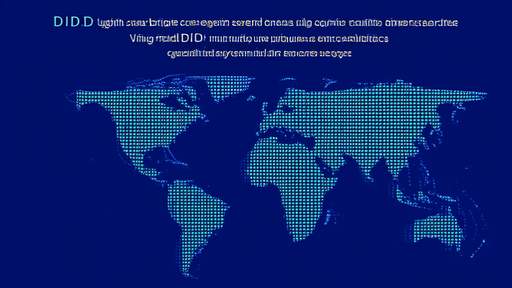The global push for digital identity (DID) systems has gained unprecedented momentum in recent years, driven by the need for seamless cross-border transactions, secure online interactions, and efficient government services. As nations develop their own digital identity frameworks, the challenge of ensuring interoperability and mutual recognition across borders has emerged as a critical issue. The concept of cross-border DID mutual recognition is no longer a futuristic ideal but a pressing necessity in an increasingly interconnected world.
At its core, cross-border DID mutual recognition refers to the ability of one country's digital identity system to be recognized and accepted by another. This goes beyond mere technical compatibility; it involves legal, regulatory, and trust frameworks that allow different systems to work together seamlessly. The implications are profound, touching everything from international travel and e-commerce to financial services and public administration. Without such recognition, the full potential of digital identity remains constrained within national boundaries.
The technical challenges of achieving DID interoperability are substantial but not insurmountable. Different countries have adopted varying approaches to digital identity, ranging from centralized models to decentralized blockchain-based solutions. Some nations prioritize biometric authentication, while others rely on cryptographic keys or smart cards. Bridging these technical differences requires standardized protocols and open frameworks that can accommodate diverse systems without compromising security or privacy.
Several international initiatives have emerged to address these technical hurdles. The International Organization for Standardization (ISO) has been working on global standards for digital identity, while organizations like the Decentralized Identity Foundation (DIF) focus on creating interoperable decentralized identity systems. These efforts aim to establish common ground where different technical implementations can communicate effectively, ensuring that a digital identity issued in one country can be verified and trusted in another.
Legal and regulatory harmonization presents perhaps the most complex challenge in cross-border DID recognition. Digital identity systems operate within specific legal frameworks that define their validity, the protection they offer to users, and the liabilities of various stakeholders. When identities cross borders, questions arise about which jurisdiction's laws apply, how disputes should be resolved, and what recourse individuals have when things go wrong.
The European Union's eIDAS regulation represents one of the most advanced attempts to create a legal framework for cross-border digital identity recognition. By establishing trust levels and mutual recognition among member states, eIDAS provides a blueprint that other regions might follow. However, extending such frameworks globally requires unprecedented international cooperation and the willingness to align diverse legal systems around common principles.
Privacy concerns add another layer of complexity to cross-border DID recognition. Different countries have varying approaches to data protection, with some implementing strict regulations like the GDPR while others have more lenient frameworks. Ensuring that cross-border identity verification doesn't compromise individual privacy rights requires careful design of systems that can operate within these different regimes while maintaining high standards of data protection.
The economic implications of cross-border DID recognition are enormous. By reducing friction in international transactions and enabling trusted digital interactions across borders, mutually recognized digital identities could unlock significant economic value. Estimates suggest that effective cross-border digital identity systems could add billions to global GDP by streamlining processes in sectors like finance, healthcare, and logistics. The potential to reduce fraud and identity theft across borders presents additional economic benefits.
Developing countries stand to gain particularly from cross-border DID recognition. For nations with large diaspora populations or significant migrant worker communities, the ability to maintain and use digital identities across borders could revolutionize remittance systems, access to services, and financial inclusion. However, these countries often face capacity constraints in implementing sophisticated digital identity systems, highlighting the need for international support and technology transfer.
The path forward for cross-border DID mutual recognition will likely involve a combination of technical standardization, legal harmonization, and the development of international trust frameworks. Pilot projects and regional agreements may pave the way for broader recognition, with lessons learned from these smaller-scale implementations informing global approaches. The role of international organizations in facilitating dialogue and cooperation between nations will be crucial in this process.
As the world moves toward greater digital integration, the ability to recognize and trust digital identities across borders will become increasingly important. The challenges are significant, but the potential benefits for global commerce, security, and individual convenience make this a goal worth pursuing. The coming years will likely see accelerated efforts to bridge the gaps between different digital identity systems, bringing us closer to a world where digital identities work as smoothly across borders as physical passports do today.

By /Jun 3, 2025

By /Jun 3, 2025

By /Jun 3, 2025

By /Jun 3, 2025

By /Jun 3, 2025

By /Jun 3, 2025

By /Jun 3, 2025

By /Jun 3, 2025

By /Jun 3, 2025

By /Jun 3, 2025

By /Jun 3, 2025

By /Jun 3, 2025

By /Jun 3, 2025

By /Jun 3, 2025

By /Jun 3, 2025

By /Jun 3, 2025

By /Jun 3, 2025

By /Jun 3, 2025

By /Jun 3, 2025

By /Jun 3, 2025